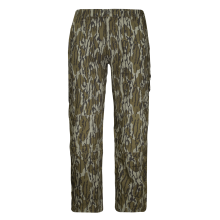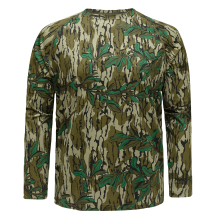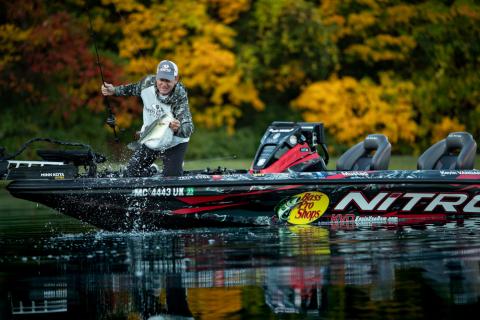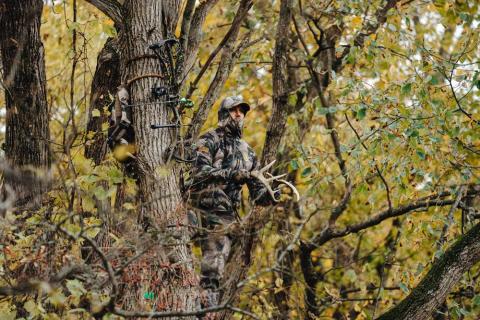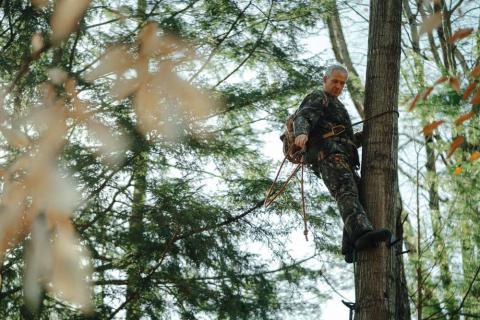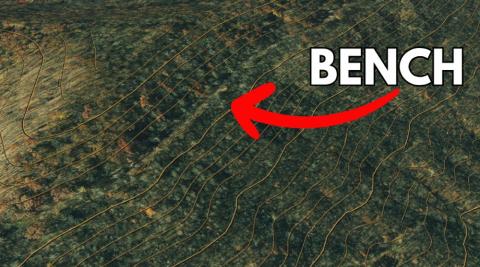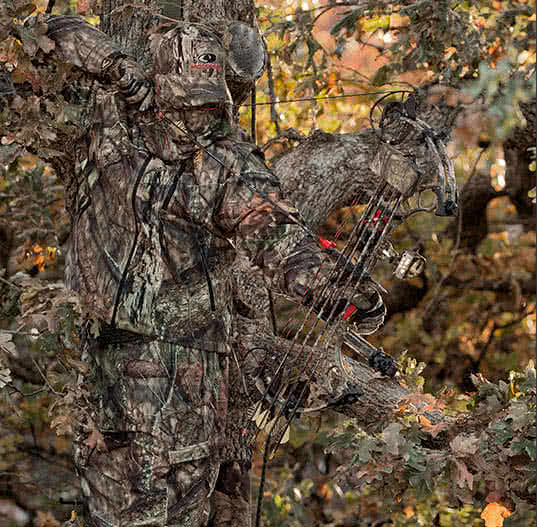By Heath Wood
By mid-October, the woods start to change. Bucks that used to move predictably from bed to feed begin spending more time on their feet, leaving signs that show their presence and dominance. Scrapes, licking branches, and rub lines start appearing almost overnight, and for the savvy bowhunter, these signs can be key to catching a mature buck during the pre-rut.
The magic that comes from bucks during the rut is something special for hunters. For example, in October 2021, a mature buck that I had never encountered showed up on a camera at a scrape that every small buck had hit in the area the previous two days. Then, two days later, at another scrape about 1/8 of a mile away, he appeared again, working the scrape. Oh, how the power of the scrape can draw in bucks from neighboring properties.
A couple of weeks later, I found myself sitting in an elevated blind near the second scrape where I’d first spotted the new buck on camera. It was the opening week of Missouri’s rifle season, and I’d traded my bow for my 6.5 Creedmoor. That morning, a hot doe came through the field, followed closely by three younger bucks. One of them chased her for a bit, then broke off to freshen up the scrape again. A few minutes after they cleared out, a mature buck stepped into the field with his nose to the ground, right on her trail. I eased the crosshairs onto him and squeezed the trigger. The shot hit hard, but he still managed to jump the fence and crash down into a thick, brushy ravine, where he went down for good. When I finally walked up and took a moment to admire him, I realized he was the same buck I’d captured on camera at those scrapes just weeks earlier. That day reminded me again of the power of a scrape and the magic of the rut.
Scrapes aren’t just random spots where a buck kicked up some dirt, they’re like the deer’s version of a message board. Both bucks and does use them to leave scent, check in on who’s around, and mark their travel routes. Knowing how to find and read these spots can turn some of October’s slowest hunts into your best chances at tagging a buck with a bow.

Photography by Tes Jolly
Community Scrapes vs. Travel Scrapes
Not all scrapes are created equal. When I mentioned that you must learn to interpret scrapes, I meant that hunters should know how to use them effectively by understanding the differences.
First, there is what is commonly known as a community scrape. These are large, well-used scrapes often found on field edges, main trails, or logging roads. They are usually accompanied by an overhanging licking branch, which deer of all ages and sexes use to deposit scent. A community scrape is where I first saw my buck in a game camera picture. The scrape functions like a message board, with multiple deer checking in over a two- or three-day span. My buck appeared on camera after dark, which is common for bucks visiting these types of scrapes, as the heaviest activity occurs at night.
A travel scrape or a doe-specific scrape is usually smaller and tucked into the timber. These scrapes are found along doe travel routes, such as near bedding cover, staging areas, or subtle terrain funnels. Bucks typically check these scrapes more often, regularly during daylight hours, especially as the pre-rut approaches. These are the scrapes that offer the best bowhunting setups in October, because you can often find a mature buck checking does to see if any are nearing estrus.
Timing is Everything
While scrapes might show up early in the month, the real activity picks up in the second half of October and the first few days of November. As bucks grow more aggressive and does near estrus, scraping activity increases. The days before Halloween are especially good, with cooler weather and longer nights prompting deer to be more active.
The best time to hunt scrapes is during the last two hours of daylight, when bucks get up from their beds and check nearby scrapes on their way to feed. However, early morning hunts near travel scrapes close to bedding areas can also be successful when conditions allow for a stealthy approach. To know when bucks are most active at a scrape, a cellular game camera can be one of the most valuable tools in a hunter’s gear. If a buck appears during daylight hours, it’s time to hunt.
Weather and Scrape Activity
Scrape hunting success often depends on the weather. Conditions like cool fronts can increase buck scrape activity. A drop in temperature frequently triggers a surge in scraping, especially after warm days. Another important factor is rising barometric pressure. Bucks are more likely to be active and checking scrapes during high-pressure systems, which is why many hunters closely watch hunting apps that use barometric pressure as a key data point to help determine the best times to hunt.
Weather can also be a major factor, like light rain or drizzle, which can often cause bucks to frequently refresh their scrapes after the moisture has washed their scent away. The hours right after precipitation are the best time to hunt, as bucks are re-scenting all the scrapes again.
Hunting Scrapes Without Spooking Deer
Scrapes may be hotspots, but they’re also risky if hunted carelessly. Bucks often approach scrapes cautiously, using the wind and cover to their advantage. To hunt them successfully, play the wind and thermals. Always set up downwind of the scrape, with a margin of error in case the buck circles downwind before committing.
Back off a few yards instead of setting right over the scrape; set up 20–40 yards away along the likely travel route. Bucks often scent-check scrapes from a distance. A scrape line is one of my favorite places to use my tree saddle when bowhunting. Sitting in a well-covered tree within a comfortable archery range of a scrape line can be great October hunting.
The Power of Mock Scrapes

If you can’t find a fresh scrape in the right spot, make your own. Mock scrapes are among the most effective tools and one of my favorites as an October bowhunter.
It is important to select the correct location when creating a mock scrape. Place scrapes along natural travel routes, close to doe bedding areas, or at terrain funnels. Then, add a licking branch. Bucks and does depend heavily on the branch above the scrape for communication. Use a natural branch or add a vine to boost attraction.
When using any deer scent attractant, like a scrape scent, paying attention to scent elimination is equally important. Wear rubber boots and gloves when creating a mock scrape to prevent deer from catching any human scent left behind. Once the area is free of human odor, it's time to apply a deer lure. Many hunters use buck urine or gland scents, but often deer will take over a well-placed scrape without any scent, aside from what they leave each time it is checked. Mock scrapes can become instant magnets, drawing curious bucks during daylight and offering a perfect shot opportunity when set up correctly.
Scrapes and licking branches aren’t just deer sign; they’re opportunities waiting to be used. It may be unpredictable, but the language of the scrape stays consistent, and it’s one that every bowhunter can learn to read and use to succeed when hunting. If you focus on the scrapes does are using, play the wind right, and pay attention to changing weather, you can put yourself within bow range of a mature buck this October.
Read More: Tips to Make a Mock Scrape













